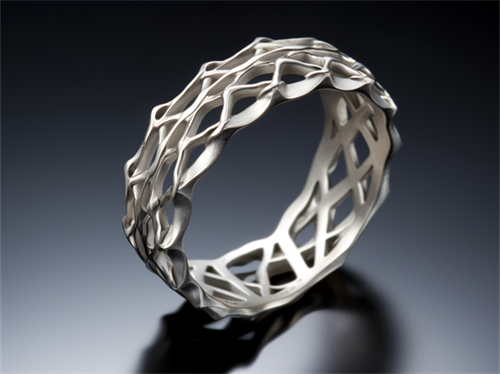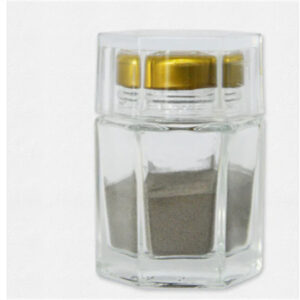ผงโลหะผสมโลหะ enable manufacturing of high performance parts using powder metallurgy pressing and sintering or additive manufacturing methods across transportation, industrial, medical and energy industries. This guide covers various alloy options, powder production processes, key specifications, use cases, quality considerations and sourcing advisory.
Types of metal alloy powders
Common categories:
| พิมพ์ | ตัวอย่าง | คุณสมบัติสำคัญ |
|---|---|---|
| Nickel Alloys | Inconel, Monel, Hastelloy | Corrosion resistance, heat resistance |
| Cobalt Alloys | MP35N, Haynes 25, Stellite | Wear resistance, biocompatibility |
| โลหะผสมไทเทเนียม | CP Grade, Ti-6Al-4V, Ti-6Al-7Nb | High strength, low weight |
| เหล็กกล้าไร้สนิม | 316, 17-4PH, 15-5PH | ความต้านทานการกัดกร่อนความแข็งแรง |
| เหล็กกล้าเครื่องมือ | H13, M2, M4, P20 | Wear resistance, toughness |
| Copper Alloys | Chrome copper, Brass, Bronze | Electrical & thermal conductivity |
Match alloy material properties to critical part performance requirements like heat tolerance, hardness, fatigue life etc driving powder grade selection.

วิธีการผลิตผงโลหะ
Key commercial scale manufacturing processes:
- การทำให้เป็นอะตอมก๊าซ – High pressure inert gas breaks up molten metal stream into fine droplets. Achieves spherical powders with good flow and packing properties. Different nozzles generate desired size ranges.
- การทำให้เป็นอะตอมพลาสมา – High energy plasma arc melts feedstock. Powerful induction coils generate droplets that solidify into spherical powders with tight particle distributions.
- Rotating Electrode – Centrifugal forces acting on spinning molten alloy subjected to inert gas jets causes disintegration into fine droplets resulting in spherical powders.
- อิเล็กโทรไลซิส – Metal ions from solution plate out on cathodes as fine powder particles. Used for reactive materials like aluminum, magnesium, titanium.
Controlling process parameters like temperature, atmosphere and cooling rates result in quality powder feedstock for part fabrication using additive manufacturing or powder metallurgy compaction.
Typical Specifications
| พารามิเตอร์ | คำอธิบาย | วิธีทดสอบ |
|---|---|---|
| ความบริสุทธิ์ | >99%, minimize impurities | ICP analysis |
| รูปร่างอนุภาค | Spherical >80% | Microscopy |
| การกระจายขนาดอนุภาค | Tight ranges as required | การเลี้ยวเบนเลเซอร์ |
| แตะความหนาแน่น | Material dependent | ฮอลล์โฟลว์มิเตอร์ |
| ความหนาแน่นที่ชัดเจน | Material dependent | เครื่องพ่นยา |
| Flow rates | Standardized for each nominal size | ฮอลล์โฟลว์มิเตอร์ |
| Surface oxides | <3000 ppm; oxide thickness | Inert gas fusion; XRD |
Review statistical batch data from manufacturer against these metrics specific to your target grade confirming quality and consistency relative to standards.
แอปพลิเคชัน
Metal alloy powder applications span:
การบินและอวกาศ – Engine components like blades, nozzles; airframe fittings, landing gear parts; on-board systems
ทางอุตสาหกรรม – Natural gas/petroleum pumps, valves, drill bits; tooling inserts; nuclear reactors; heat exchangers
เกี่ยวกับยานยนต์ – Engine components, turbocharger rotors, gears; chassis, drivetrain parts
ทางการแพทย์ – Implants for knees, hips, dental; surgical tools; imaging instruments
ผู้บริโภค – High end watches, sports equipment like bicycles, golf clubs etc requiring strength, aesthetics
พลังงาน – Solar cell contacts, electrodes; generators; battery components; wind turbines
Taking advantage oftailorable materials properties with design freedom and precision.
Industrial Standards
Key specifications applicable to ผงโลหะผสมโลหะ:
| มาตรฐาน | คำอธิบาย |
|---|---|
| ASTM B213 | Standard classification system for metal powders |
| ISO 4490 | Chemical analysis, sampling procedures |
| ASTM B822 | Apparent density and flow rate measurement |
| MPIF 04 | Statistical methods for metal powder analysis |
Review statistically validated certifications showing conformance to grade composition limits and production quality consistency relative to applicable standards.
Common Metal Powder Grades
| อัลลอยด์ | Trade Names | ข้อกำหนด | |
|---|---|---|---|
| Nickel Alloys | Inconel 718, 625; Hastelloy X; Monel K500 | AMS 5662, 5663 etc. | |
| Cobalt Alloys | MP35N, Haynes 25, Stellite 21 | ASTM F90, F1537 etc. | |
| โลหะผสมไทเทเนียม | Ti-6Al-4V Grade 5; Ti-6Al-7Nb ; CP Ti Grade 2 | AMS 4911, ASTM B348 etc. | |
| เหล็กกล้าไร้สนิม | SS 316L; 17-4PH; 15-5 PH; | ASTM A240, B945 etc. | |
| เหล็กกล้าเครื่องมือ | H13; M2; M4; P20+Ni | AISI types | ASTM A681 |
| Copper Alloys | C18150, C19500, C95810 | UNS No., ASTM B194 etc. |
Match target grade to applicable alloy specifications that align with finished part functionality needs across strength, conductivity, corrosion resistance parameters.
Quality Considerations
| Metric | วัตถุประสงค์ | วิธีทดสอบ |
|---|---|---|
| องค์ประกอบ | Verify grade purity | ICP analysis |
| การกระจายขนาดอนุภาค | AM compatibility, sintering response | การเลี้ยวเบนเลเซอร์ |
| อัตราการไหลของห้องโถง | Powder packing density, layer uniformity | ฮอลล์โฟลว์มิเตอร์ |
| แตะความหนาแน่น | Indicates final part density | Weigh measured volume |
| ความหนาแน่นที่ชัดเจน | Powder system density | Gas pycnometry |
| รูปร่างอนุภาค | Sphericity optimizes properties | Microscopy |
| Surface oxides | Impacts powder reuse | Inert gas fusion analyzer |
Consistent quality across these metrics is directly correlated with consistent final part performance meeting specifications.
Sourcing Considerations
| พารามิเตอร์ | ความสำคัญ |
|---|---|
| Batch Data Sheets | สูง |
| Sampling Support | สูง |
| เวลานำ | ปานกลาง |
| Customization | ต่ำ |
| Price Factors | ต่ำ |
Try powder samples first before large purchases to qualify printing or compression responses relative to application needs.

คำถามที่พบบ่อย
Q: What is the difference between pre-alloyed and blended elemental powders?
A: Pre-alloyed powders have uniform composition throughout each spherical particle. Blended elemental mixes may have slight composition differences between particles that can create inhomogeneities in final parts.
Q: Should metal powders be stored under special conditions?
A: Store sealed with dessicant away from moisture and oxygen which causes deterioration. Limit temperature variation to 10-30°C. Discard if severe discoloration, caking or significant loss of flow. Shelf life is typically over a year if properly stored.
Q: What are common metal powder blend mixes?
A: Cobalt-chrome, stainless steel-17-4PH, and nickel alloy-stainless steel powder blends offer ways to tailor final part material properties like strength, wear resistance or corrosion resistance at lower costs than high purity grades.
Q: What precautions are needed when handling metal powders?
A: Use appropriate PPE and avoid skin contact or inhalation during powder handling. Passivated powders pose fewer health hazards compared to atomized powders which can be more reactive. Review SDS sheets on flammability, reactivity and exposure protocols.




